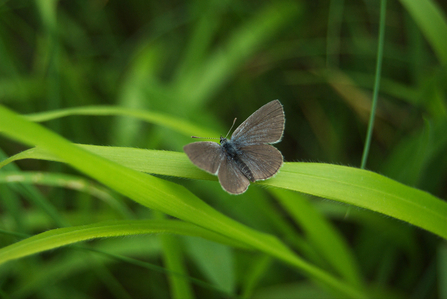London Wildlife Trust are working hard to maximise the quality of London’s green spaces for insects by providing hands-on advice to land managers and delivering action on the ground to enhance and protect the capital’s threatened but vital habitats. We are closely closely monitoring populations of insects such as the stag beetle (Lucanus cervus) through our Staggering Gains citizen science programme and dragonflies and damselflies through our Water for Wildlife project funded by Esmee Fairbairn Foundation and Thames Water.
Water for Wildlife has been successful in encouraging the public to record around 30 species of dragonfly and damselfly found across the city, to build our understanding of their distribution and response to climate change whilst carrying out river restoration and wetland creation to benefit the aquatic insects that rely on them.
At our Centre for Wildlife Gardening in Peckham we have been working for 30 years to give advice and demonstrate ways to make gardens more friendly to all wildlife including insects.



